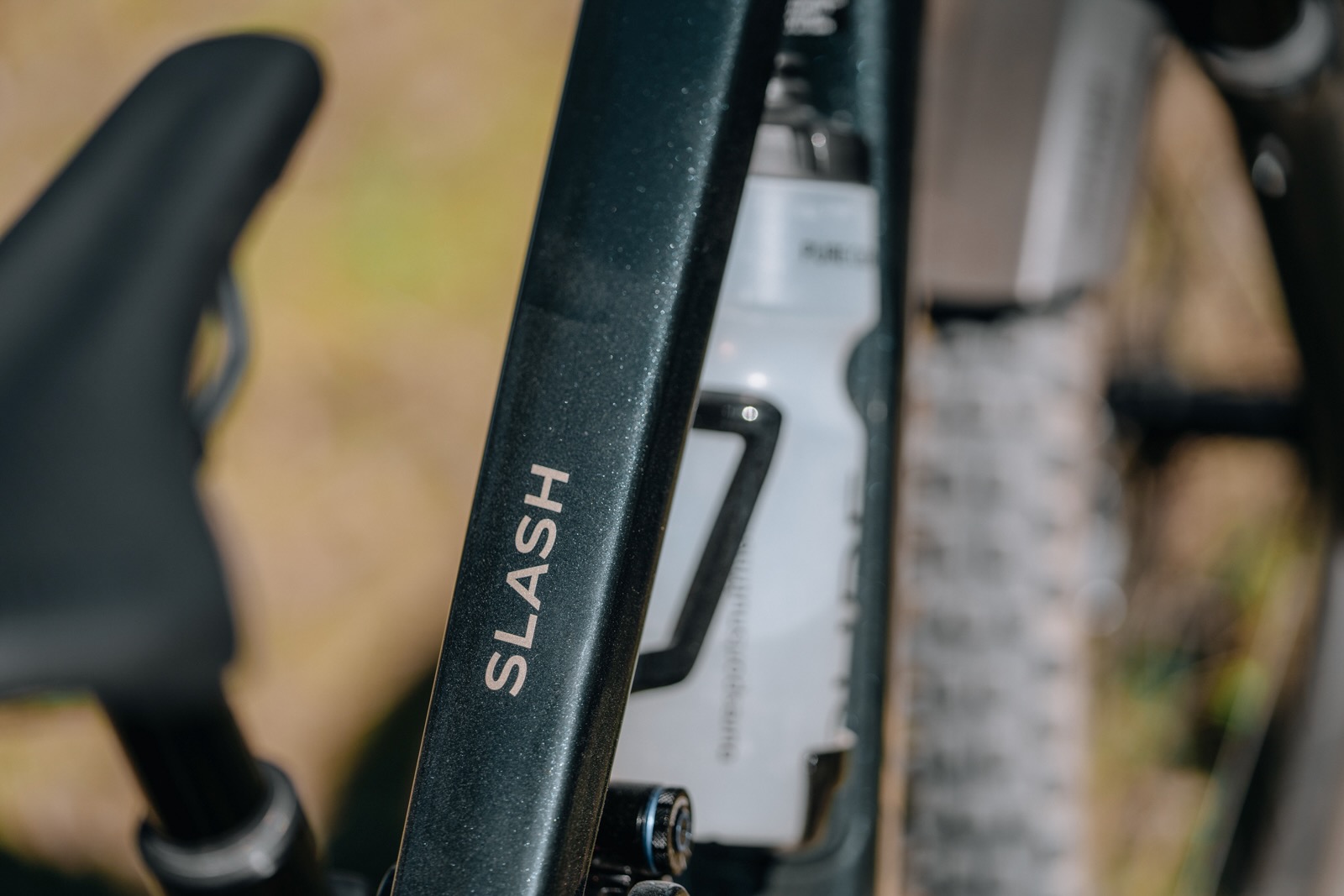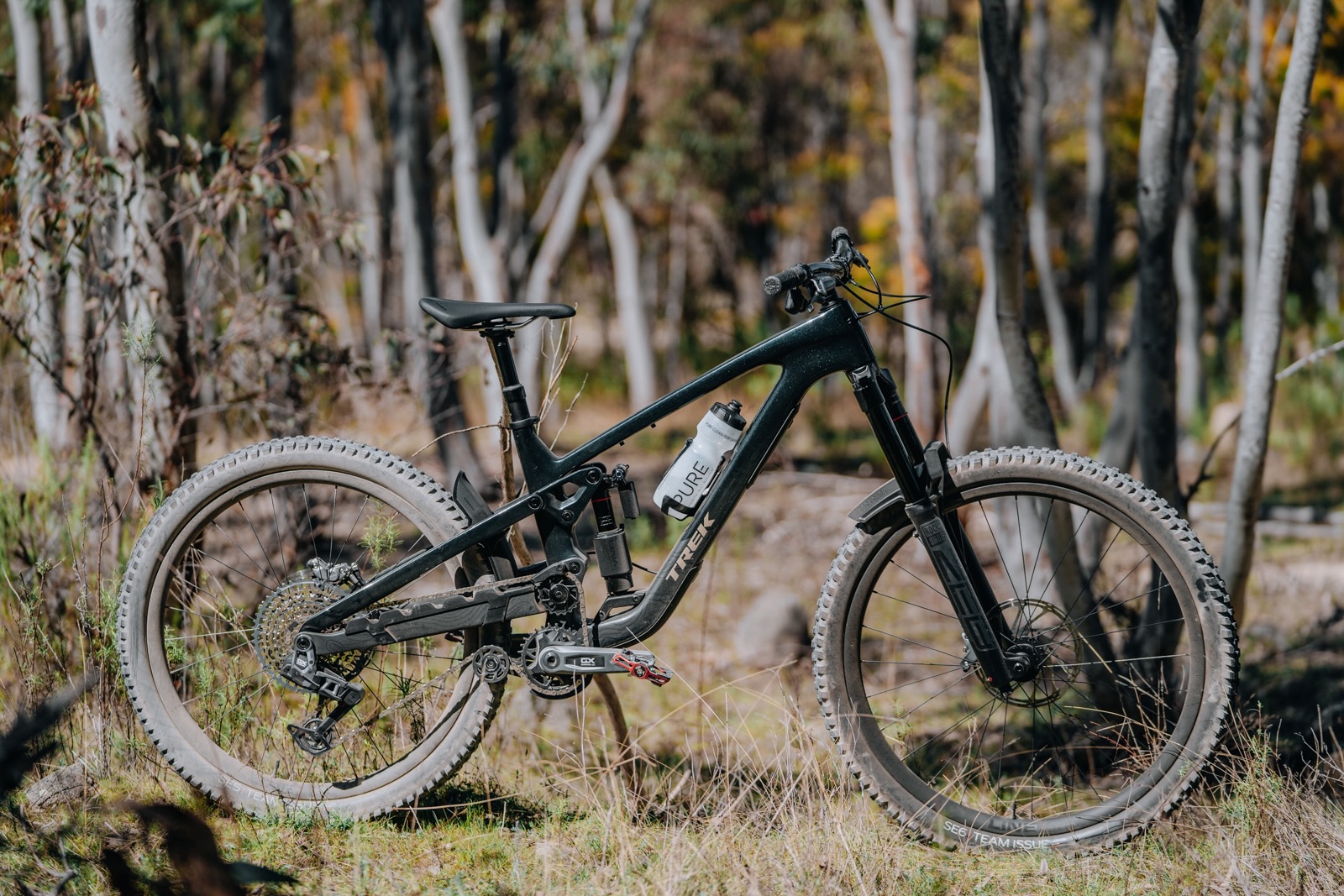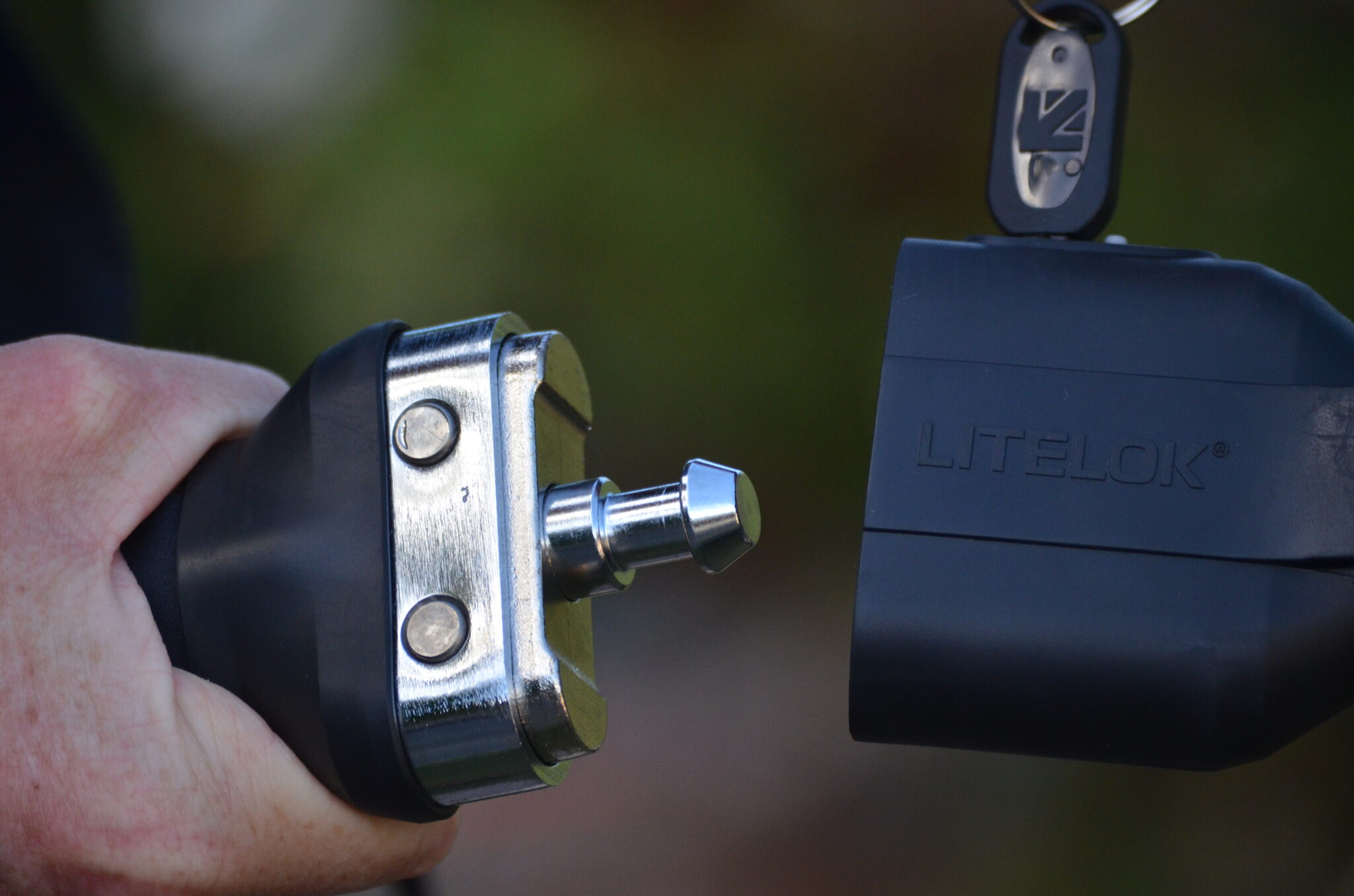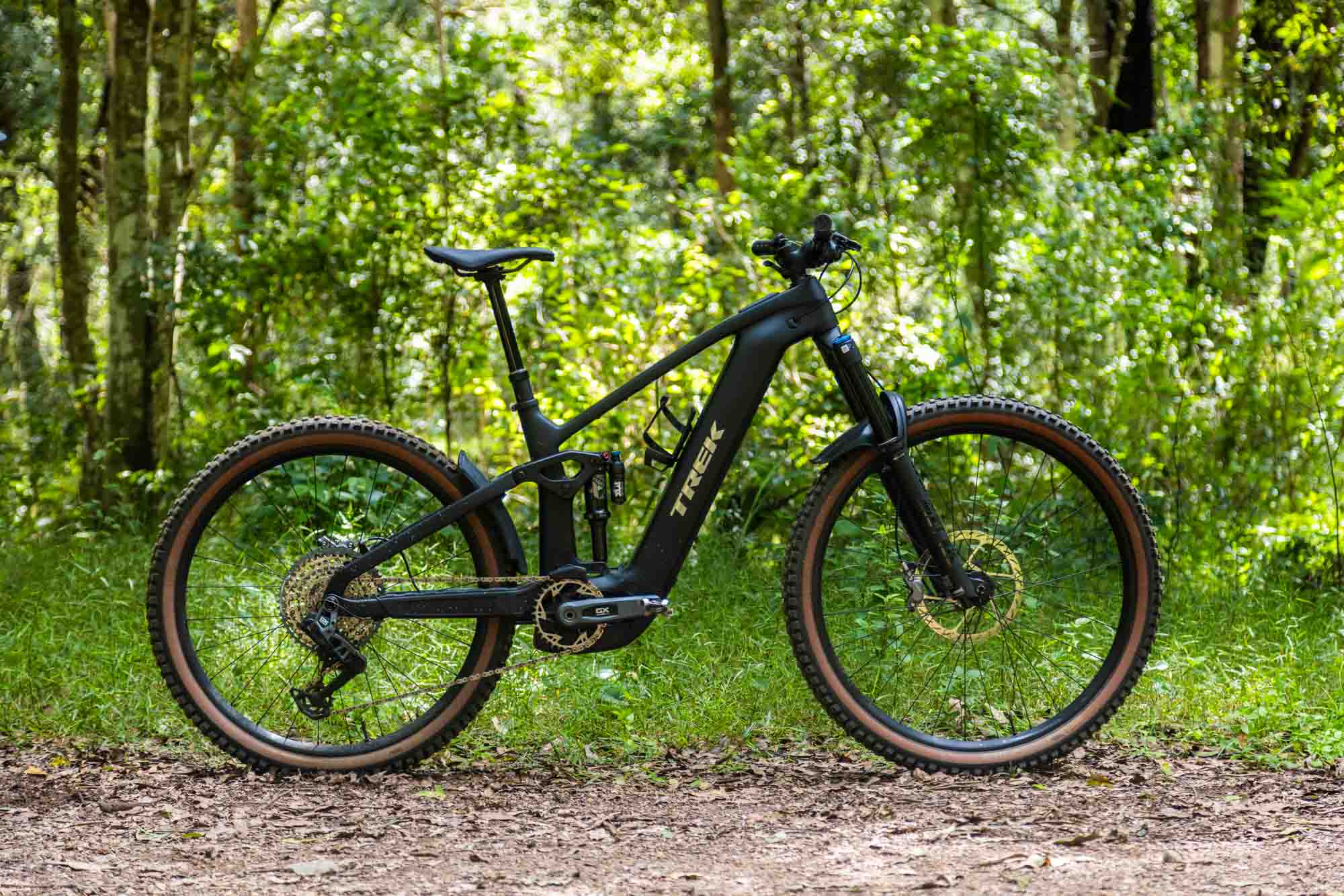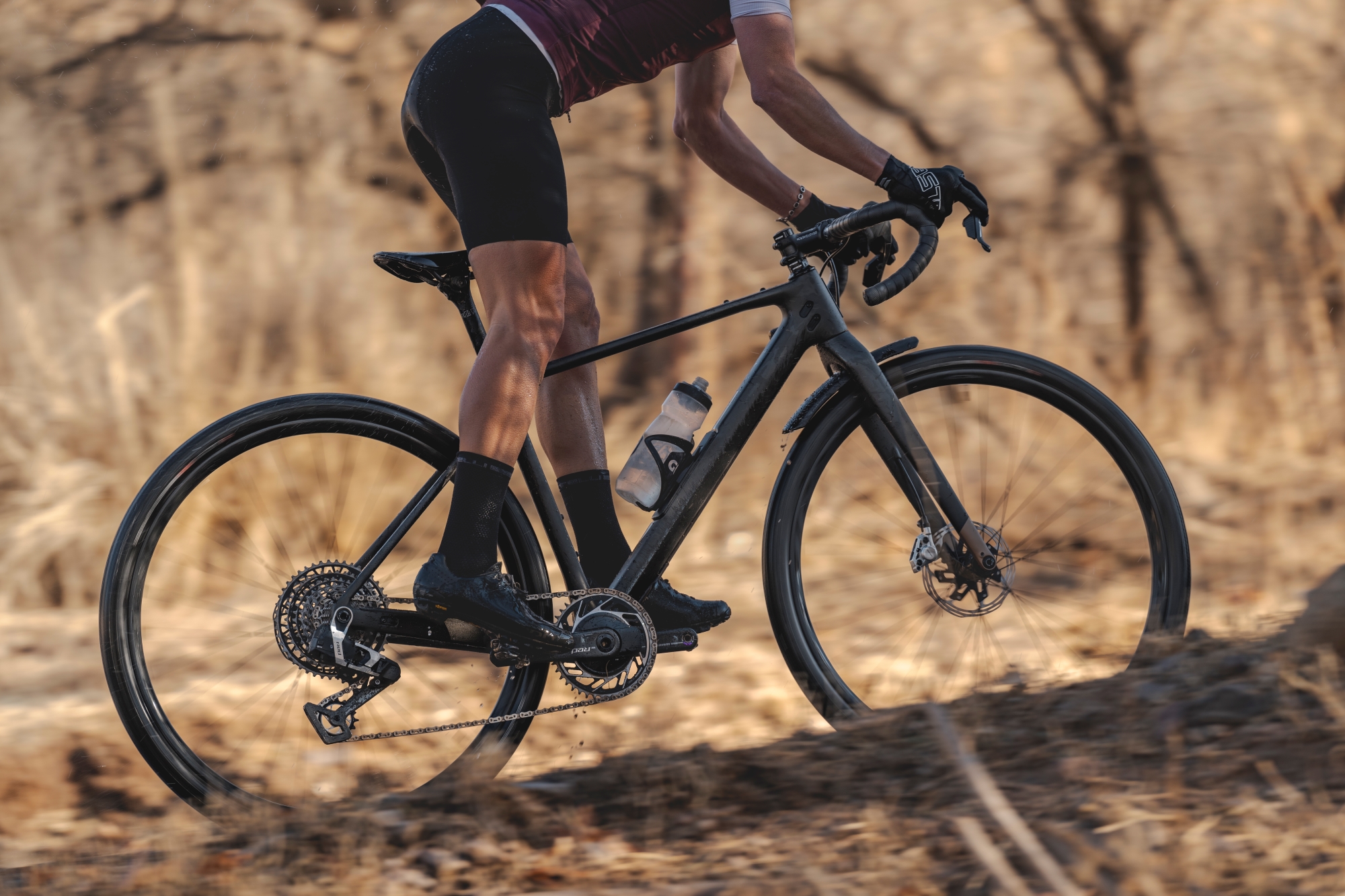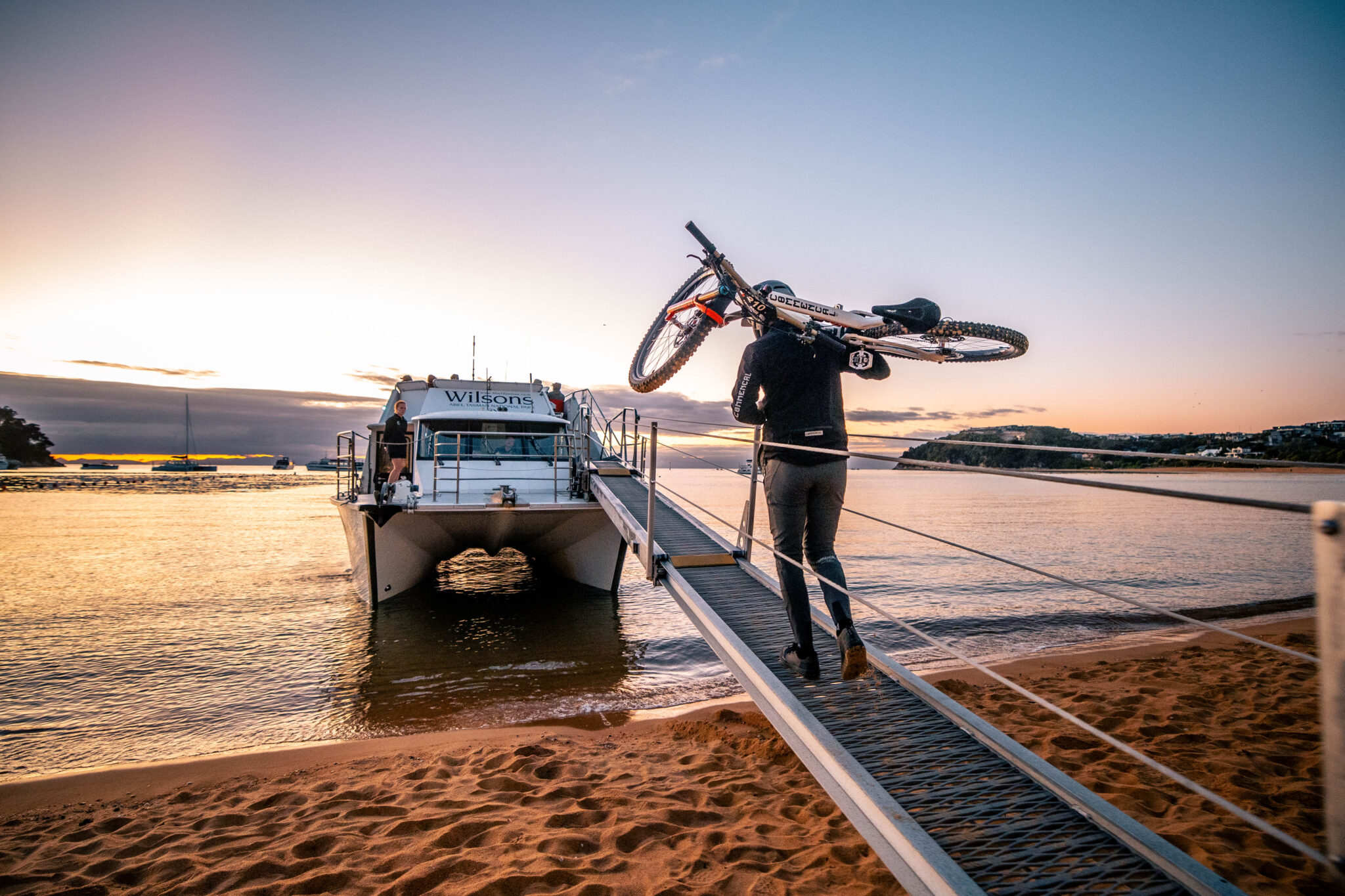TESTED: 2024 Trek Slash 9.8 GX AXS
The latest Trek Slash is a way bigger change than we expected. It pedals better, descends better, and is even better value.
Well come on say it with me, “it looks like a Session”.
The latest Trek Slash running the name tag Gen 6 was released in early September, bringing a host of updates over the outgoing model. I was lucky enough to spend time on the new Slash before release, riding it off the beaten track and away from prying eyes. Having owned or ridden all versions of the Slash since it moved to 29” wheels, being able to jump on the Gen 6 Slash was a very comfortable affair. There has been a lot of change in what riders demand from a dedicated enduro or all-mountain bike since the last Trek Slash was released three years ago. Plenty of enduro bikes have become mini downhill bikes, with more travel, ever slacker geometry and major refinements to suspension kinematics for performance on big hits, small hits and for pedalling alike.
The new Slash starts at $6999 for the alloy Slash 8, and run up to the fancy pants Slash 9.9 XX AXS T-type model for $19499. I have the first carbon model in the range on test, the 9.8 GX AXS T-type, which sells for $10499. This means the Slash goes up against the likes of the Specialized Enduro Expert ($11500) which doesn't currently have a T-type drivetrain, and only a ZEB Select fork. The Giant Reign Advanced Pro is $8999 but has less travel, and a mechanical SRAM GX drivetrain. A Mondraker Superfoxy or Commencal Meta are also in a similar price range. There is a lot of choice for a high quality enduro bike if you have around $10000 to spend – lucky you!
Photographer: Jordan Riddle
Tester: Ben (Moshy) Morrison
Riding Experience: 20+ years racing many forms Mountain Bikes around the globe.
Generally Rides: Pivot Firebird
Height: 176cm
Weight: 78kg
Bike Test Tracks: Majura Pines, Stromlo Forest Park, ANU Bike Park, Blue Range, Poo Pines
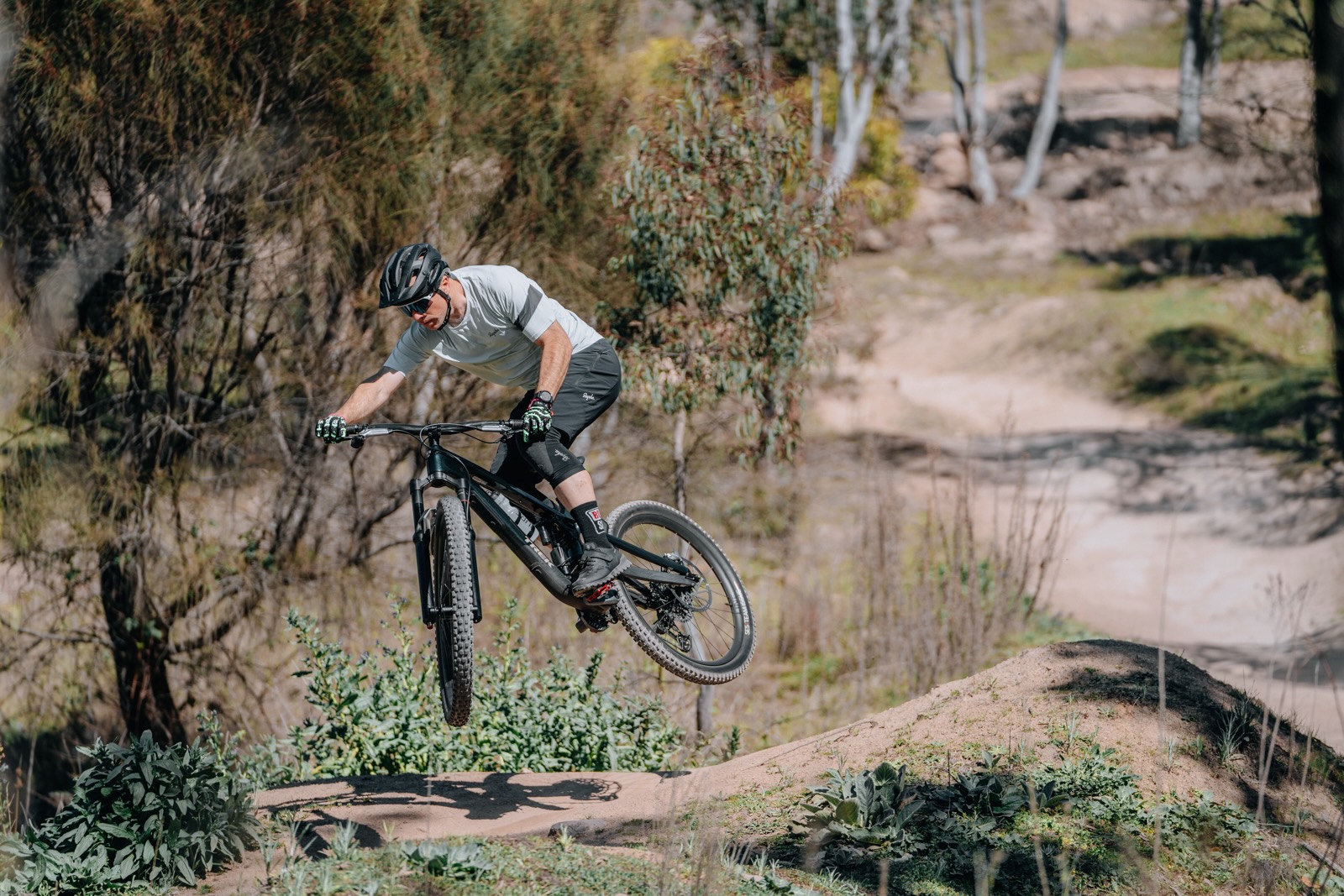
What's new on the latest Trek Slash
Trek have totally overhauled the Slash, with more travel, new geometry, a high pivot setup and mixed wheel sizing, to make the Slash more capable than ever. The mixed wheel sizing (MX), or mullet, means the rear wheel in all sizes other than small is 27.5” with a 29” front. The small runs 27.5” front and rear. You also have the option of running full 29” wheels in all sizes (again not small) if you wish to really bump up the speed factor or if you just like the way the bigger wheels ride. In order to do this, you will need to switch out the lower shock mount which Trek says keeps the geometry almost the same as stock with the Mullet setup. Note you will need to buy this 29er shock mount separately, as it is not included and sells for $69.99.
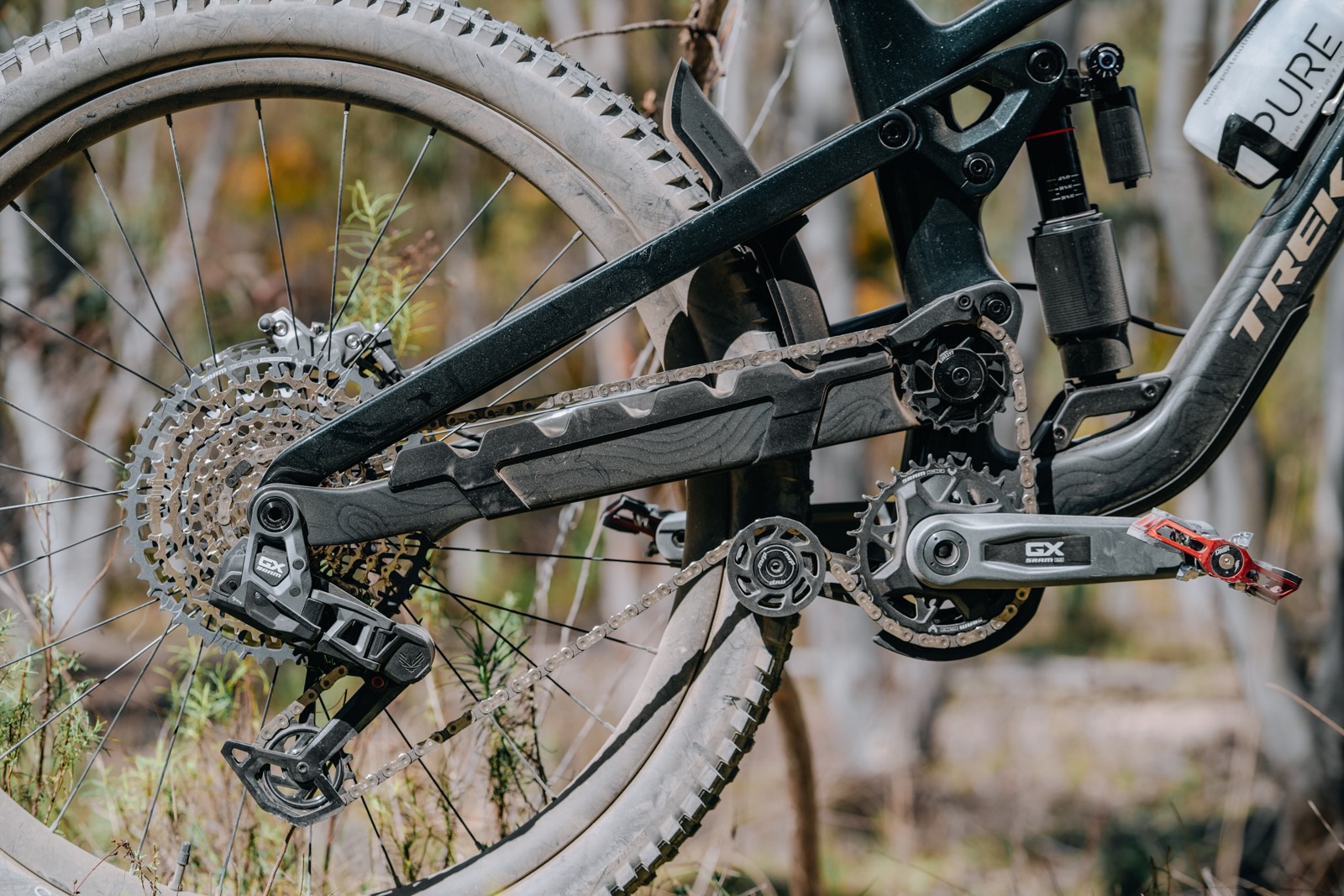
Trek have bumped up the travel from 160mm to 170mm, and while the fork has 170mm as well, you can run upto a 190mm single crown fork on the Slash! Unlike most Trek bikes there is no MinoLink, but you can move the flip chip at the lower shock mount to change progression from 20% to 25% and this impacts bottom bracket height as well. The head set uses adjustable cups, with zero offset as stock. The top cup drops in for fore-aft adjustment, and same for the lower, although that needs to be pressed in. These allow you to adjust things plus or minus up to 1.5 degrees; from the stock 63.3° head angle, to either 62.6° or 64.1°. KnockBlock is also gone with the new Slash, so there is no steering stop limiter, due to the changeable headset cups, which will set you back $63.99.
In addition to a larger and updated frame storage you get a tool mount under the top tube, which is pretty standard now. When you look inside the frame you will see integrated hose/outer guides, which is a nice upgrade. Trek also have a jazzy rear mud guard that matches the one supplied on the RockShox ZEB fork, but if you want the racer look and go 29er out back you will need to remove this.
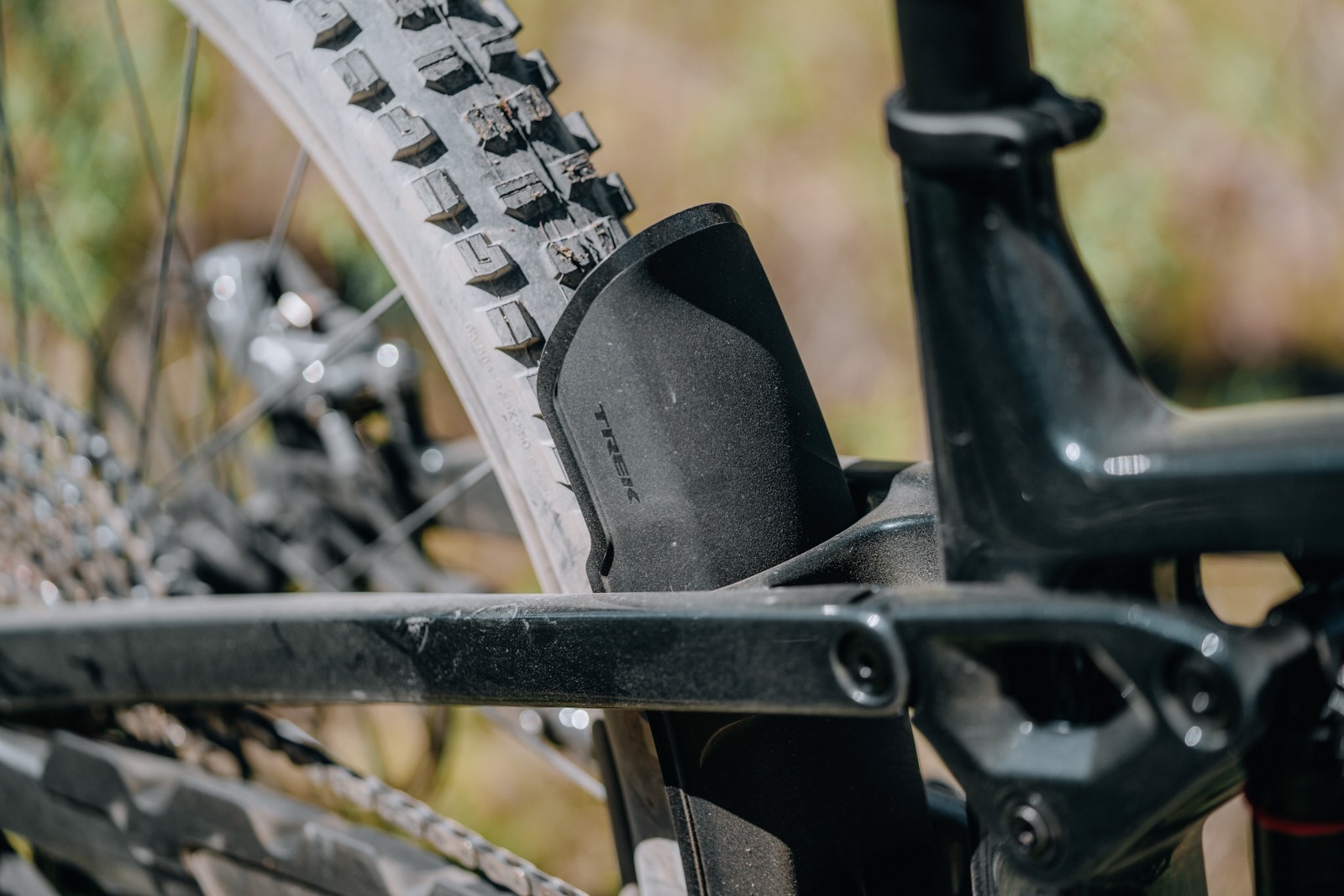
Trek have also made upgrades to the armouring for rock strikes and shuttle rash and increased insertion for longer dropper posts.
And of course the big change – the new Trek Slash is a high pivot! Trek's Session downhill bike has a long history of using high pivots, in fact I am even old enough to have ridden and reviewed the original one they made, way back when UC Stromlo Forest Park had no trees. The Slash’s high pivot differs from the Session in many ways and that’s because the bike has more than one function; it has to go uphill, downhill and everything in between. Because of this Trek designed the Slash differently and use what is a large high idler pulley that has 19 teeth, mixed with a specific low idler made by MRP (also used by Loris Vergier on his Session) to help the entire system be the best it can be and not just another high pivot band wagon bike. Lots of thought has gone into making this new Slash including the chain length which is a conventional 126 links on all sizes other than XL which uses 128 links, but if you are using SRAM’s Transmission that won’t be an issue as a stock chain will cover all sizes.
A closer look at the Trek Slash 9.8
The Gen 6 Slash I am riding is the first carbon model, the 9.8 GX AXS T-Type, it comes with a hefty amount of wish list items. This includes Bontrager Carbon Line Elite 30 wheels that in my own experience are just crazy bomb proof and great to ride. Trek have a full GX Transmission group set, short 165mm cranks and SRAM's new Code Bronze brakes supplied with metal pads to match the 200mm rotors.
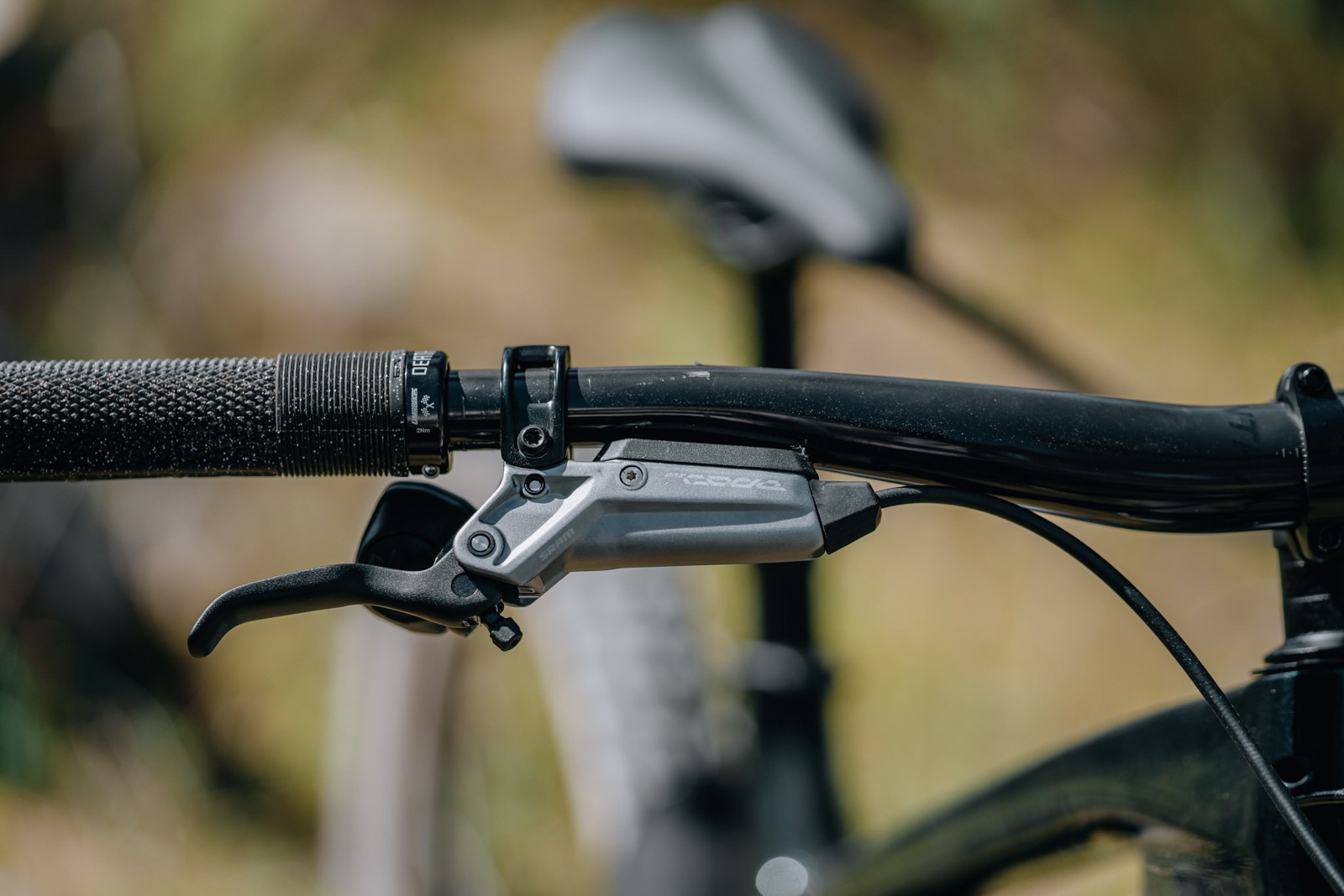
Suspension is via the RockShox Select+ range with a ZEB fork and Vivid rear shock. Both units are outstanding bits of kit with the ZEB only missing out on the Butter Cups that you get on the Ultimate, and the Vivid lacks high speed compression damping adjustment. Both features you can totally live without but if you must have the top tier kit RockShox offer Butter Cups as an aftermarket upgrade along with one for the Vivid to gain that high speed compression adjustment.
On the trail
When looking at some of the changes from the outgoing Gen 5 Slash the increased climbing ability was perhaps the first thing that surprised me. In the past it was automatic for me to grab the lockout (even on a custom tuned shock) and grind away, yet the new Slash doesn’t see you doing this as it gets you to the top of a trail without too much effort not using the lockout at all. The rear suspension only bobs slightly and generates plenty of traction on technical climbs, meaning that you can easily make your way to the top of the trail without reaching for the Vivid’s lockout. On steeper climbs, the front wheel remains planted on the ground, ensuring excellent position likely also thanks to the new steeper seating position. Sprinting out of the seat is also notably much more efficient for all the racers out there.
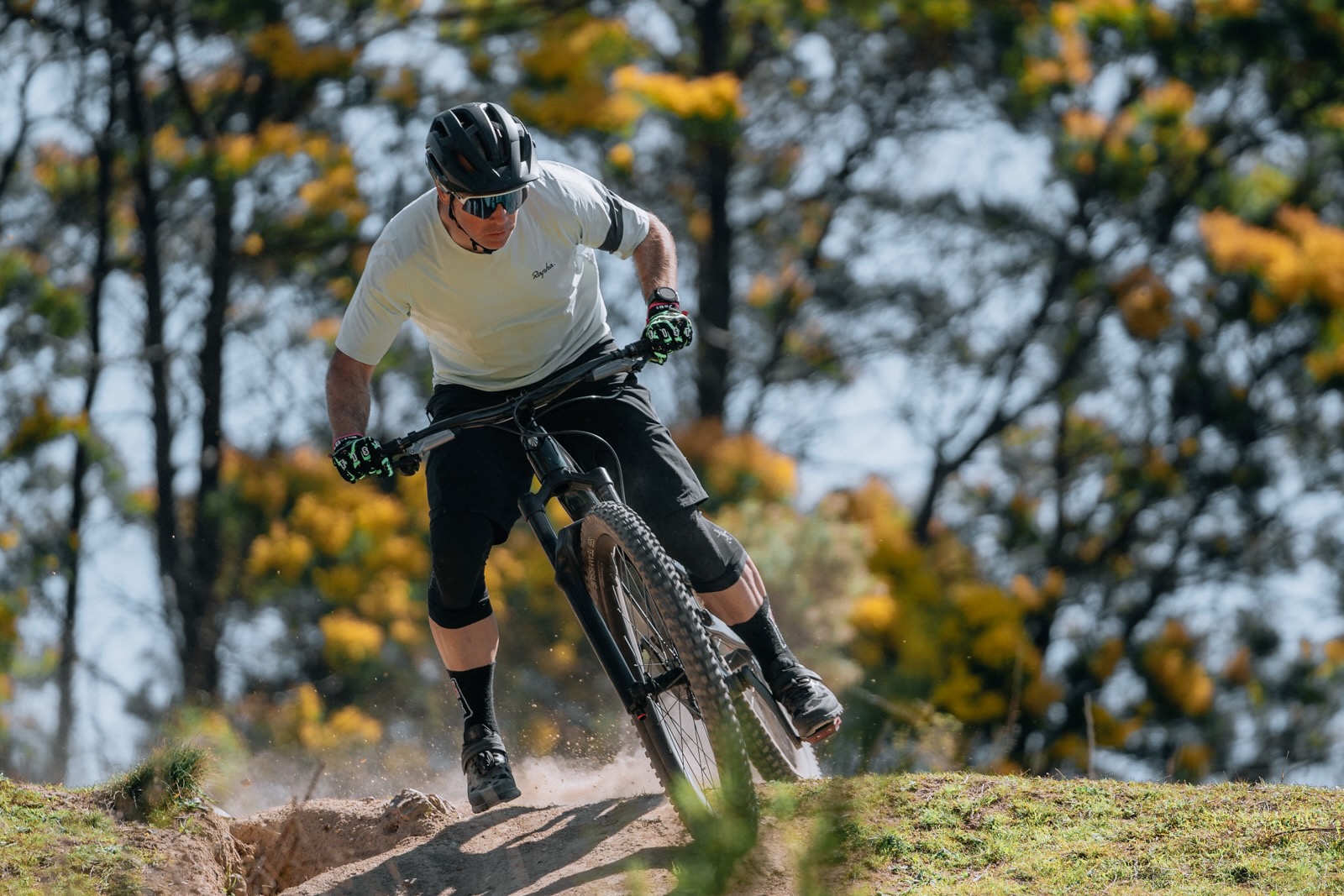
The new Trek Slash has incredibly direct handling and reacts to steering input quickly and precisely. However, this can lend to some trail feedback after long days as you start to relax more and not attack the trails. When you know a trail the Slash is an absolute rocket of a thing and is faster in a straight line over rocks than dog when you ask it what’s in its mouth! The redesigned suspension absolutely gobbles everything up, and the straight line stability is class leading – which is impressive for how well it also reacts to steering input.
If I am honest, I expected the new Trek Slash to just have a few changes that the old one needed all wrapped up in high pivot marketing. I have been so surprised at how different the two bikes are, they are not cut from the same cloth at all. This Gen 6 Slash does pick up where the old one left off but it’s just such a vast improvement on a bike I already loved that it’s hard believe they are just one generation apart in bike development. At every point the Gen 6 Slash is better, even the price. I am not saying at $10,499.99 is cheap by any means but the old Gen 5 in a GX AXS spec running many of the same parts hits you at $12,599.99.
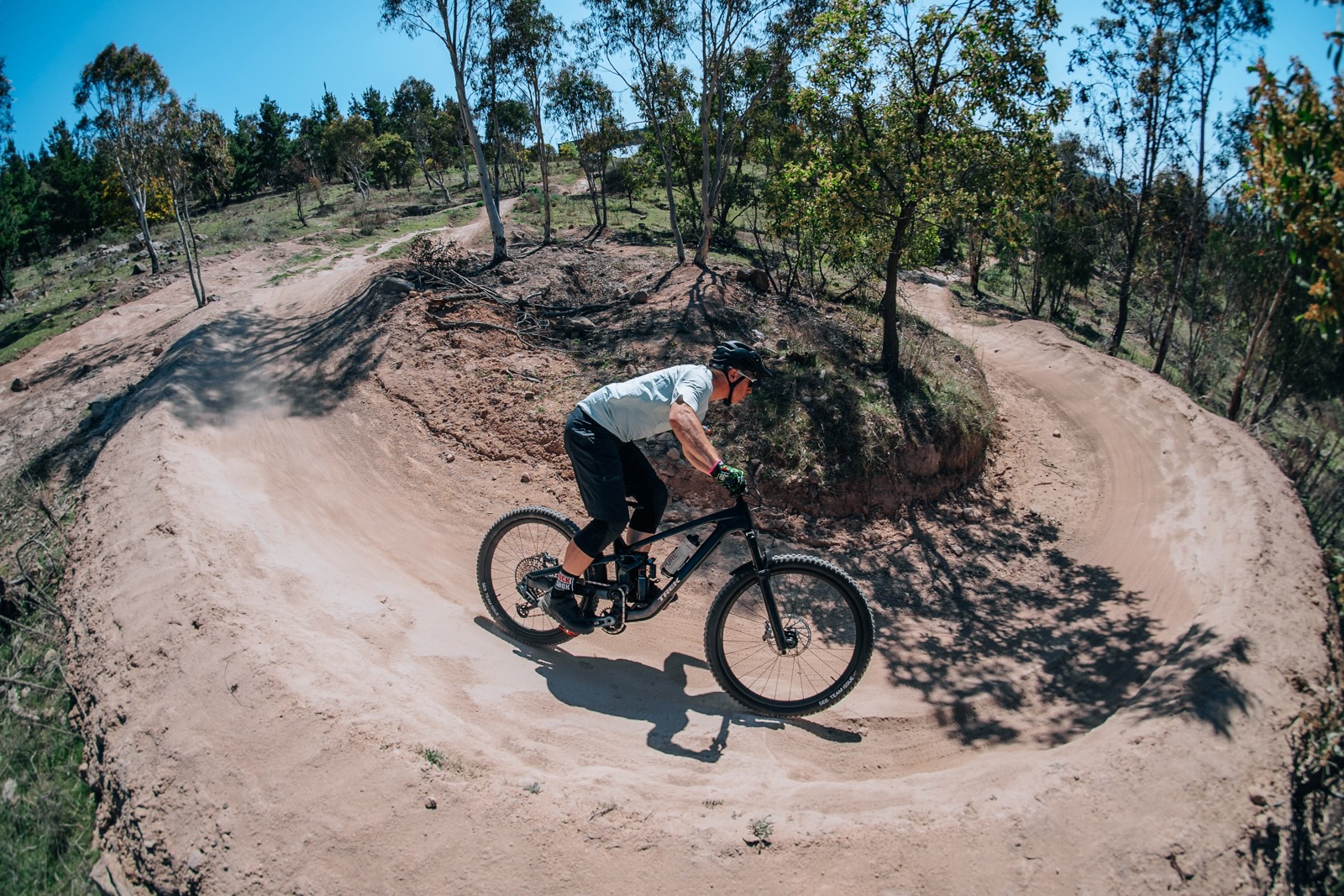
My only pain point on what is a well thought out bike is the tyres. Bontrager’s in house SE6 and SE5 are flimsy, puncture-prone tyres, which force you to run higher air pressure to avoid burping and pinch flats. I had several crashes where the bike was out riding the tyres and I would recommend upgrading the standard Bontrager SE6 and SE5 tyres for a more robust and softer compound set before you start riding, especially if you truly want to ride to the capability of the bike.
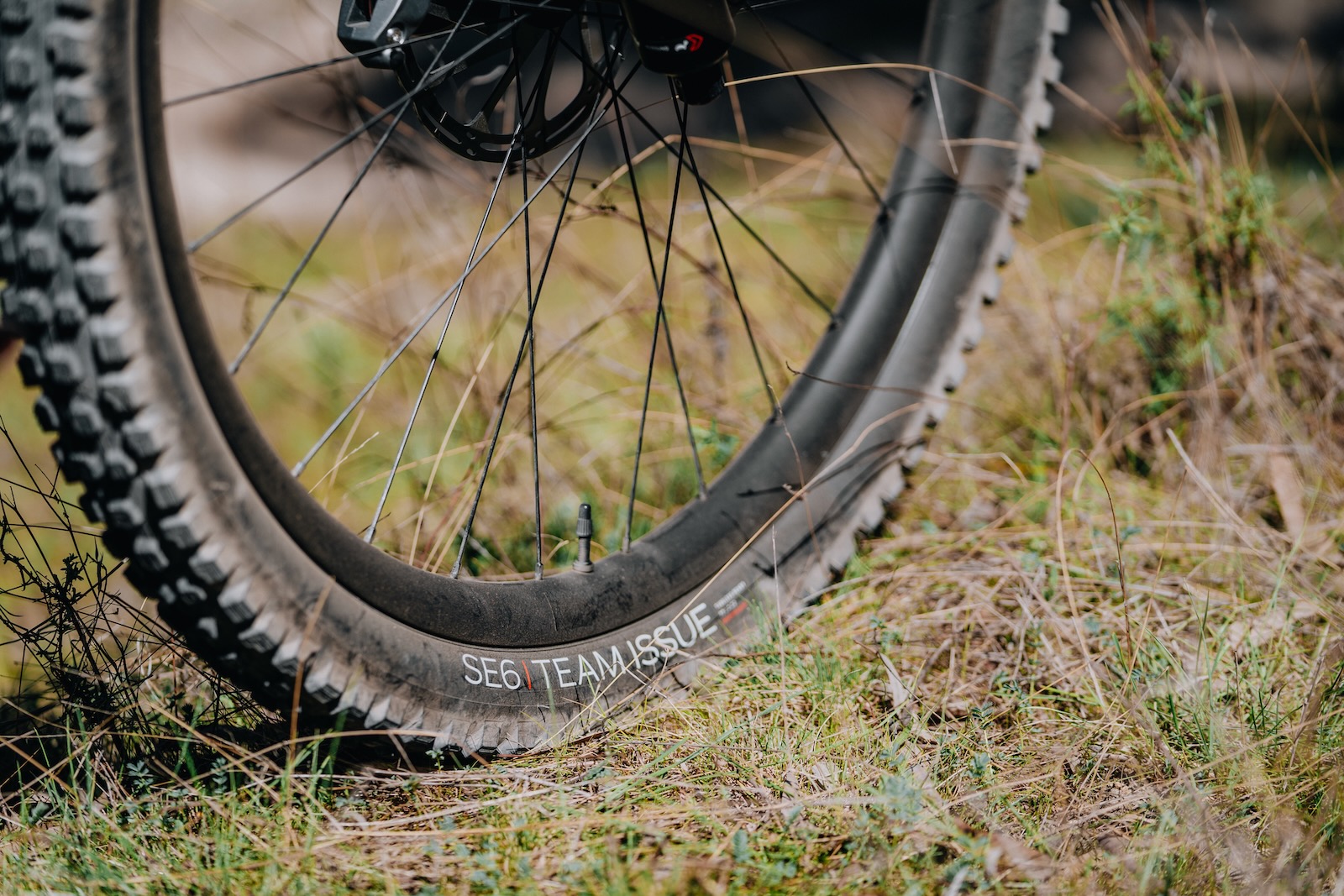
Our take
The latest Trek Slash is a huge improvement on what was already a great bike. The new Gen 6 Slash is really for any rider that likes a long travel bike even if it is simply because they want that extra bit of insurance that comes with more travel. Trek uses the phrase 'Back Country Battle Axe' to describe the Gen 6 Slash, changing it from 'The Ultimate Race Bike' for the last generation. What I think Trek is doing here is really saying you don’t need to race to want to ride this bike, it pedals amazingly and has plenty of storage and can in most sizes fit a very large water bottle in the included bottle cage. All things that are a big tick if you are going out riding all day. But the history of the Slash and it’s use by The Trek Factory Race Team means that if you are a racer these same features benefit you too, perhaps just for different reason. The latest Trek Slash is no quiver killer, but it really is a bike you can do a lot more on than other bikes that sit in this same part of the market.
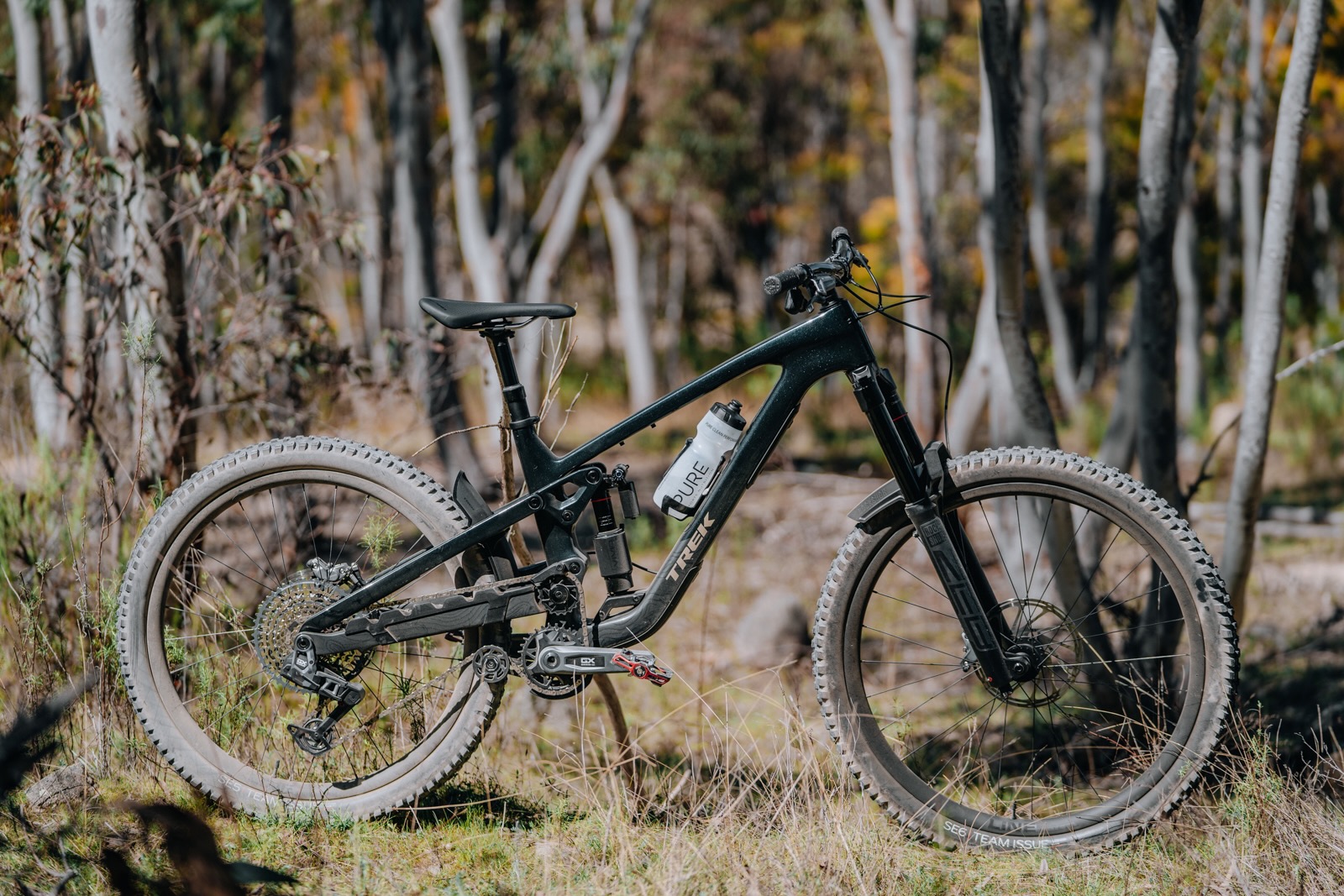
Full specs on the Trek Slash 9.8 GX AXS
RRP $ 10,499.99
Weight 15.26kg
trekbikes.com/au/en_au/
Available Sizes S, M, M/L, L, XL (M/L tested)
Frame OCLV Mountain Carbon
Fork RockShox ZEB Select+, 170 mm
Shock RockShox Vivid Select+, 170mm
Shifter SRAM Eagle AXS POD
Derailleur SRAM GX Eagle AXS, T-Type
Crank SRAM GX Eagle, DUB 165mm, 30t
Bottom bracket SRAM DUB Wide threaded
Chain SRAM GX Eagle, T-Type, 12sp
Cassette SRAM Eagle XS-1275, T-Type,10-52, 12sp
Brakes SRAM Code Bronze, 200/200mm
Wheel set Bontrager Line Elite 30, OCLV Mountain Carbon
Tyres Front Bontrager SE 6 Team Issue 26 x 2.50”
Rear Bontrager SE 5 Team Issue 27.5 x 2.50”
Stem Bontrager Line Pro 35mm
Handlebars Bontrager Line Pro Carbon, 820mm
Seatpost Bontrager Line Dropper, 170mm
Saddle Bridge Bontrager Arvada, austenite rails, 138 mm width
